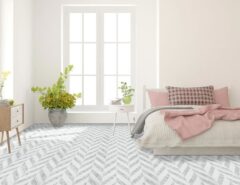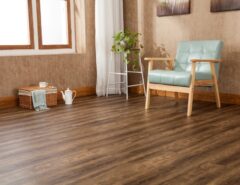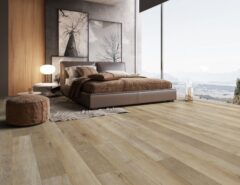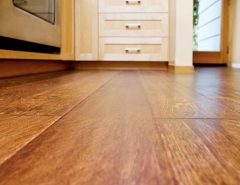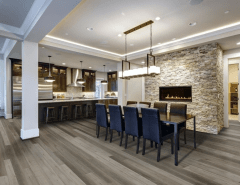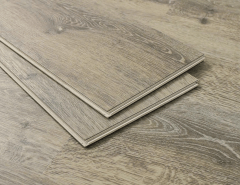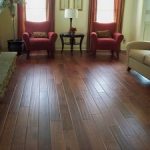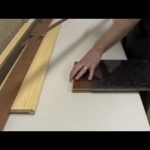Travertine stone tile and is one of the oldest building materials in history. And you can invest in it for your space today! But, which types of travertine tile are out there? Let’s find out.
***
Travertine, used for centuries in architecture and home décor, is a versatile natural stone tile that easily adapts to any home decor context you can imagine in your home. Whether you want to create a warm and inviting rustic look in your kitchen, a peaceful oasis in your backyard using travertine pavers, or you want to surround yourself with elegance and quality every time you shower, travertine tiles are an excellent choice.

Depending on the style, cut, color, and grade you select, you can find the perfect travertine tile or flooring for your home. There are a lot of options. But first, what is travertine and where does it come from?
What is travertine tile?
Travertine is a natural stone tile first used as far back as when Julius Caesar ruled Rome. It was discovered in what is now modern Italy and originally named “Tibur stone” for Tibur, Italy (now known as Tivoli), where it was first found. It is also found in great abundance in Turkey, where some of the richest beds of travertine provide the most opulent tiles for all kinds of uses all over the world. At some point, the stone became known as “travertine,” and the name has stuck ever since.
The most common colors found in travertine are beige, brown, gray, or gold. Because of the iron compounds and organic matter found in the stone, you may even see hints of green, reds, or rust colors, as well. The colors you see in your travertine will depend on two things: the cut and grade of the travertine you choose and how it’s finished. Let’s discuss the cut and grade first.
The cut and grade of your travertine tile
The quality, cost, and look of the travertine you choose is determined, in part, by the cut and grade of the tiles. Premium grade is going to have consistent color throughout and no gray or black discoloration. Standard grade will also be consistent in color with little gray or black discoloration, but it may also have striations and swirls running through the tile, as well. Commercial grade will often have black and gray running through the color of the tile, as well as some obvious imperfections.
The cut of the natural stone tile is the next thing that will impact the look of travertine. You have two types to consider: a vein cut or a Fleuri cut. A vein cut is across the vein. What that means is you’ll see what look like lines running across the tile because the slab from which the tiles were cut was in turn cut downward to show the layers in the rock bed. If you prefer the tiles with a swirling, circular pattern, you’re looking at Fleuri cut travertine tiles.
Browse for vein cut travertine tile.
Choosing a Finish for Your Travertine
Next up is the finishing options for travertine, which will dictate the final look and feel of your tile. Honed travertine is one of the most popular travertine tiles in the United States. It can be either filled or unfilled, although Americans prefer it filled. Travertine is naturally porous. So, honing and filling those pores help to make it a smoother and more continous surface. This style of travertine has a smooth feel and texture, the result grinding one side of the tile.
Tumbled travertine is cut stone that is, literally, tumbled to create an imperfect finish. The natural stone tiles are put into a rubber barrel with grit and water and shaken until it begins to appear worn. This is good for when you’re going for a rustic look, or that “weathered by time” appearance to evoke travertine’s origins with the ancient world.
Polished travertine is the glossy tile used a lot in the foyers of commerical buildings, and can be equally applied to a residential setting. Brushed travertine is created by actual brushing with a wire brush or rotary wheel to give it texture, and a weathered look that is similar yet distinct to the tumbled varieties of travertine. You could think of it as the yin to the polished travertine’s yang; one is smooth, the other is textured.
Browse for brushed and chisled travertine tile.
Where Should You Use Your Travertine Tile?
Travertine tile can be used almost anywhere. The cut, grade, color, and finish will be the deciding factor for you. In general, though, you can add travertine tile to your showers, bathroom floors, kitchens, backsplashes, floors and walls in nearly any room, outside your home, and even your pool deck. If it’s a relatively flat surface, travertine can probably be added.
When selecting your travertine tiles, think of the style and the purpose of the room you want to include it. Talk to BuildDirect about things like slip resistance when it comes to travertine tile in relation to where you’re thinking of installing it. Decide too whether or not you’re after a pristine effect, or a classical look. From here, it will be easier to narrow down your options for travertine tile.
Tumbled travertine pavers, because it’s made to have imperfections and even rounded edges, is great for outdoor use on patios, around your pool, or as a walkway. There’s nothing that says you can’t bring it inside, especially if you want a rustic, old-world, imperfect look. Keep in mind, with tumbled travertine, it must be sealed regardless of where you use it.
What Style of Home Decor is Best for Travertine?
If you think Mediterranean is a good style for travertine, you’re right. If you said lush, luxurious, high-end homes, you’re also right. If you say Spanish villa, contemporary, high-rise condo, small townhouse, or any other type of home, you will be right again. Travertine is a versatile natural stone tile that complements any home, thanks to its natural coloring and multiple styles, grades, and cuts.
Because travertine has been around for so long, it’s been used in ways you might not have thought possible. In ages past, it was used to build castles in Germany and bath houses in Rome. But don’t think it’s a material of the distant past, either. You can also find it in the lobby of the Sears Tower and in Singapore as the main design feature, as well as material, of an amazing Italian-inspired home.
Luxurious and beautiful stone
Travertine tiles, whether you get them tumbled or honed, whether you choose beige or gray, or any style or color in between, are beautiful additions to your home. As a floor, shower, or decorative wall, this versatile natural stone tile can make any home look luxurious and beautiful regardless of size, style, or location. Now, all you have to do is decide which type of travertine you like best.
***
Resources:
http://publicdesigncenter.org/travertine-tiles
https://www.builddirect.com/learning-center/flooring/types-grades-travertine/
https://www.builddirect.com/learning-center/faq/travertine-tile/
https://www.builddirect.com/learning-center/flooring/travertine-for-the-bathroom/
https://www.builddirect.com/learning-center/flooring/travertine-faq/
https://www.builddirect.com/learning-center/flooring/travertine-flooring-history/
http://freshome.com/2014/02/05/10-luxurious-ways-decorate-travertine-interiors/
http://freshome.com/2012/01/06/italian-inspiration-travertine-dream-house-in-singapore/
http://www.houzz.com/travertine














